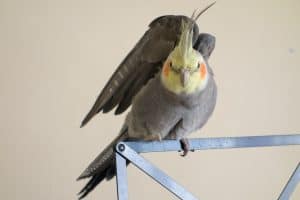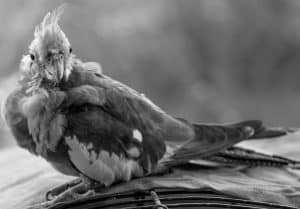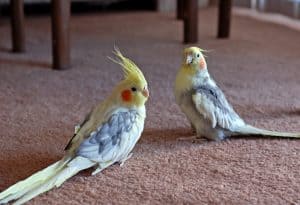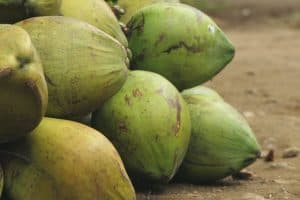Ever wondered about the charming bird that’s captured the hearts of bird lovers worldwide? If you’re curious about the origins and history of your feathered friend, you might ask, “What is the cockatiel’s background?” Native to the semi-arid regions of Australia, these small parrots have become one of the most beloved pets in avian households.
Cockatiels are not just known for their distinctive crests and orange cheek patches but also for their friendly and sociable nature. They’ve been part of human families since the 19th century, and their popularity has only grown. Let’s dive into the fascinating journey of how the cockatiel went from the wild outbacks of Australia to becoming a cherished companion in homes around the globe.
Origin and History of Cockatiels

Cockatiels, with their distinctive orange cheek patches and erectile crest, are not just any bird species. They originate from the vast Australian outback, becoming one of the most popular pet birds worldwide due to their friendly demeanor and charming features.
From Wild Australian Natives to Global Pets
Cockatiels began their journey as wild birds in the arid regions of Australia. Known scientifically as Nymphicus hollandicus, they are the smallest members of the cockatoo family. In the wild, these birds primarily feed on grass seeds, demonstrating a diet that is effortlessly replicated by pet owners around the globe. They were first discovered in Australia in 1770 but did not gain popularity as household pets until the 19th century.
The transition of cockatiels from wild Australian natives to beloved global pets can largely be attributed to their adaptability and the ease with which people can care for them. As pet cockatiels, they require a basic diet of seeds and fresh fruits, making them a low-maintenance option for bird enthusiasts. Compared to other parrot species, cockatiels are relatively easy to care for, which contributes to their widespread popularity among captive birds.
Selective breeding played a pivotal role in the variety of color mutations seen in pet cockatiels today, including lutino, pied, and cinnamon varieties. This breeding not only enhanced their appeal but also made each cockatiel unique, fostering a deeper connection with their owners. Today, they are celebrated not only for their visual appeal but also for their ability to mimic sounds and their generally sociable nature, cementing their status as excellent pets across continents.
Characteristics of Cockatiels

Building on their historical roots and widespread domestication, cockatiels boast traits that enhance their charm as pets. In this section, discover various aspects of their appearances and behaviors that contribute to their popularity.
Appearance and Colors
Cockatiels are recognizable by their unique physical traits, which include long tail feathers and an expressive erectile crest that reacts to their emotional state. Most wild cockatiels showcase a dominant grey coloration, but captive breeding has introduced a stunning diversity in their feather colors. Variants like the lutino cockatiel, characterized by its luminous yellow plumage and red eyes, and the pied subtype with patches of varying colors, are particularly eye-catching.
These color mutations arise from selective breeding, accentuating the bird’s aesthetic appeal without affecting its pleasant temperament. The iconic orange cheek patches are a defining feature that adds to their visual charm. Male cockatiels, in particular, are known for their vibrant plumage and striking appearance.
Vocalization and Behavior
Cockatiels are naturally vocal, using a variety of chirps and whistles to communicate. In captivity, these birds can learn to mimic sounds and even simple melodies, often using this skill to capture the attention of their human companions. Behaviorally, cockatiels are sociable and thrive on interaction, whether with other birds or their human caregivers.
They exhibit a curiosity that makes them engaging pets, but they also require environmental enrichment to stay mentally and physically healthy. Providing toys, perches, and occasional treats like fresh fruits can help keep a pet cockatiel stimulated and content in its environment.
Cockatiel Habitat and Distribution
Originating from Australia, cockatiels are a prominent member of the cockatoo family, known for their adaptability both in the wild and as domesticated pets. This section explores their natural habitats within Australia and how they have adapted to life in domestic environments.
Natural Australian Habitats
Cockatiels thrive in the diverse landscapes of Australia, particularly favoring areas that offer a blend of open country and sparse woodland. Typically, these areas are replete with grasslands and scattered trees, providing both food and shelter. Grass seeds form a significant part of their diet, demonstrating their adaptation to the arid and semi-arid regions of the Australian continent. Similarly, during the harsher seasons, cockatiels migrate to more hospitable areas, showing an impressive resilience and ability to survive in varying environmental conditions.
Adaptation to Domestic Environments

When it comes to adapting to domestic environments, cockatiels have shown remarkable flexibility. Easily among the most popular pet birds, they have adjusted well to life inside cages and aviaries worldwide. Their needs are relatively low maintenance, requiring regular access to fresh food such as seeds, fruits, and vegetables, and they also enjoy the company and interaction with humans.
Selective breeding has resulted in various color mutations, including lutino and pied varieties, which have further increased their appeal as pets. Moreover, their sociable nature makes them suitable for interaction with other birds and pets, making them excellent companions in diverse household settings.
Caring for Cockatiels
Caring for cockatiels involves understanding their specific dietary and health needs to ensure they thrive in a captive environment. Providing the right care for these birds, which have transitioned so effectively from the wilds of Australia to beloved household pets, maximizes both their health and happiness.
Diet and Nutrition
Cockatiels require a balanced and varied diet to maintain optimal health. Primarily, their diet should consist of high-quality pellet food that is specifically formulated for small parrots, comprising about 60-70% of their daily intake. Fresh fruits and vegetables like apples, carrots, and greens should make up about 20-30% of their food supply to provide essential vitamins and minerals.
Ensure to offer a small amount of fortified seeds, such as millet and sunflower seeds, which not only cater to their natural foraging instincts but also enrich their feeding experience. It’s imperative to provide fresh, clean water daily, as hydration is crucial for their well-being.
Health and Common Conditions
Vigilance in observing your cockatiel’s health helps in early detection of common conditions that might affect them. Respiratory issues, often indicated by wheezing or tail bobbing, are common due to their sensitive respiratory systems. Another frequent ailment is feather plucking; this can stem from various causes, including stress, boredom, or dietary deficiencies.
Regular veterinary check-ups are advised to maintain their overall health and to vaccinate against potential diseases. Be proactive about environmental enrichment to prevent behavioral issues. This ensures they remain both physically and mentally stimulated within your home.
- FOR MEDIUM & LARGE BIRDS: This nutrient-rich universal blend food is ideal for cockatiels, parrots, lovebirds and other hookbills.
- IRRESISTIBLE BLEND: Contains premium seeds and vegetables medium and large birds love, such as sunflower seeds and safflower seeds.
- IMPORTANT NUTRIENTS: Fortified nutrition.
- Wild Harvest Universal Blend for Medium & Large Birds is enriched with vitamins and minerals medium and large birds need to support healthy skin and shiny feathers.
- DAILY FEED: Fill birds seed cup daily with fresh seed.
A Link to Dinosaurs?
In 2001, scientists announced that a 130-million-year-old feathered dinosaur fossil had been discovered in China. It was the first dinosaur found with its body covering intact, and it was identified as a Dromaeosaur, a small, fast-running dinosaur closely related to Velociraptor, with a sickle claw on the middle toe and stiffening rods in the tail.
According to the American Museum of Natural History, Dromaeosaurs are advanced theropods, which is a group of two-legged predators that includes Tyrannosaurus rex. Dromoaesaurs had sharp teeth and bones that are very similar to those of modern-day birds. The fossil was found in Liaoning Province in northeastern China.
It was described as looking like a large duck with a long tail. The animal’s head and tail were covered with downy fibers, and it had other featherlike structures on the back of its arms and on other parts of its body. The first feathered dinosaur was found in China in 1995.
This discovery, Sinosauropteryx, was also a theropod dinosaur, and it was also found in Liaoning Province. Sinosauropteryx dates from between 121 and 135 million years ago, and it falls in between Archaeopteryx, the earliest known bird, which lived about 150 million years ago, and Protarchaeopteryx robusta, which lived at about the same time as Sinosauropteryx but probably could not fly, despite the presence of feathers on its body.
Several other species of feathered dinosaurs have been found in the same region, and scientists believe that some species of dinosaurs developed feathers to help them keep warm. Fossils of birdlike dinosaurs and dinosaurlike birds have been found in Madagascar, Mongolia, and Patagonia, as well as in China.
The Eoalulavis, found in Spain, was one of the earliest birds that could maneuver well during flight, thanks to a feather tuft on its thumb called an alula. This feature is found on birds today, and it helps them with takeoffs and landings. Some scientists theorize that birds evolved from dinosaurs, while others are still seeking an earlier reptile ancestor for birds.
The Cockatiel at a Glance
Native land: Australia
Also known as: quarrion, weero, cockatoo parrot, crested parrot
Length: about twelve inches from the top of the head to the end of the tail
Weight: 80 to 100 grams (2.8 to 3.5 ounces)
Life span: up to thirty-two years
Colors: Cockatiels come in a wide variety of colors. Their native or “wild” color is gray. From that, breeders have developed several mutations, including cinnamon (cinnamon-colored body feathers instead of the normal gray), albino (completely white body feathers with pink feet and red eyes), silver (silver to whitish body feathers), fallow (grayish-yellow body feathers and red eyes), lutino (light-yellow body feathers), pearl (scalloped wing feathers instead of solid-colored ones), pied (a mix of yellow, white, and gray body feathers), whiteface (a white face instead of the normal yellow with orange cheek patches), and yellowface (a very faint yellow cheek patch).
Final Thoughts: What is The Cockatiel’s Background?
Understanding the background of cockatiels enhances your ability to care for these charming birds effectively. From their origins in the vast Australian outback to their current status as beloved pets around the world, cockatiels have proven to be adaptable and sociable companions. Recognizing their needs for a balanced diet and regular health checks is crucial for their well-being.
By providing the right environment and care, you’ll ensure your feathered friend thrives, bringing joy and companionship to your home. Remember their need for social interaction and environmental enrichment to keep them happy and healthy. Embrace the journey of pet ownership and enjoy the unique qualities that make cockatiels a favorite among bird enthusiasts.
Other suggested articles:




